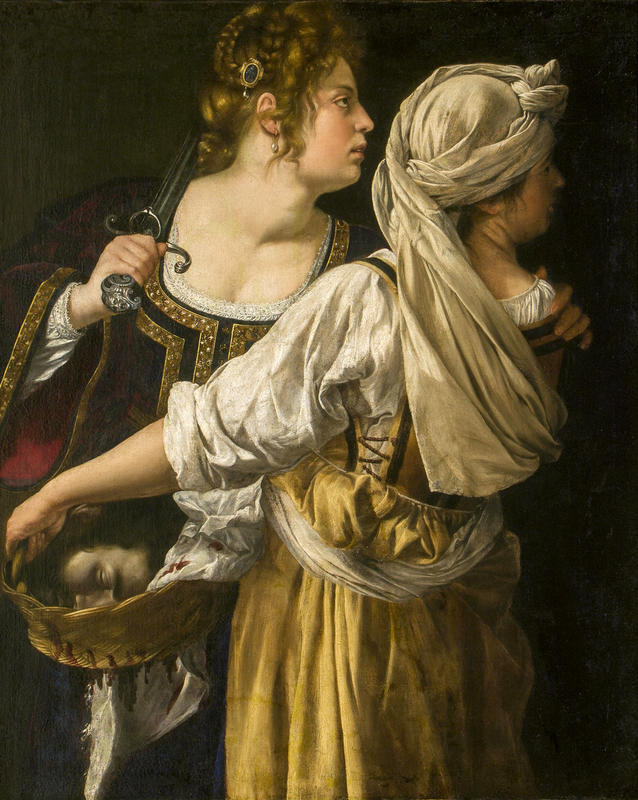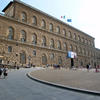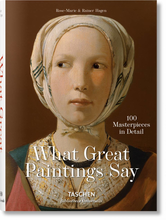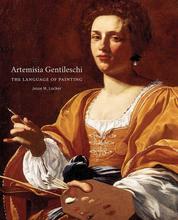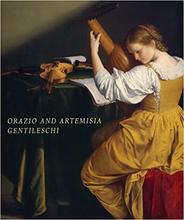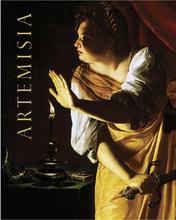More about Judith and Her Maidservant
- All
- Info
- Shop

Sr. Contributor
More boss than Nicki Minaj, Judith is one of the strongest females in the Bible and she happens to be painted here by Artemisia Gentileschi, one of the baddest female Italian painters of all time.
Thanks to those who insist that stories from the Apocrypha be left out of some versions of the Bible, Judith’s tale of strength, loyalty, and murder isn’t always taught in Sunday school. For those unfamiliar with the Book of Judith here’s the gist:
Judith was a beautiful and devout Jewish widow who discovered that the (male) leaders in her desolate town had given up faith that God would deliver them from the Assyrian general Holofernes. Since the guys were content to sit back and let the Assyrians take over, Judith took charge. She prayed for God to give her strength and make her a good liar, then naturally took off her widow garb and got real sexy. Off to the enemy camp she and her maidservant went with food and wine in a basket the perfect size for a human head. Judith looked fine as hell and said wise things so the guards let her in and soon afterwards Holofernes tried to get it in but as so often happens, he was too drunk and passed out. Judith then beheaded him, fled back home, told the Isrealites to place the head on a pike near the town gate and surprise attack the camp the next day. When the Assyrians awoke to battle and a decapitated leader they fled leaving behind all of their riches. Judith had saved the day and everyone partied and lived in peace until her death!
Judith is now considered an allegory of the spirited strength of the Jewish people and a beacon of chastity to Christians. Now you can tell your pastor that according to the Good Book, God is OK with you looking sexy as long as you don’t put out! In this painting Judith looks more cautious than coy.
Judith has just beheaded a man and one imagines she and her maid have heard a noise off canvas, which has startled them. This specific composition seems to have been borrowed from an earlier painting of the same title by Artemisia’s father Orazio for which Artemisia posed, however, there is some speculation as to whether father or daughter painted the piece. Artemisia painted the theme of Judith at least three times, likely as a way of working out her aggression towards her rapist and former art tutor Agostino Tassi. This was painted during the time Tassi was taken to court by Orazio and one presumes Artemisia was working out some major revenge fantasies.
Pay attention to details:
- The small ornament in Judith’s hair likely depicts David, considered to be Judith’s male counterpart. They both used cunning to fell brutes and protect their people.
- In the Bible, Judith kills Holofernes with his own sword. Here the murder weapon has a silver hilt with an engraving of Medusa on the bottom. Though Medusa symbols were sometimes used as protection and therefore make sense on this man’s sword, it’s more likely an autobiographical reference to Artemisia’s slut-shaming at court. Poseidon raped Medusa in Athena’s temple and as punishment for “seducing” him in her temple Athena turned Medusa into a monster.
Featured Content
Here is what Wikipedia says about Judith and her Maidservant (Gentileschi, Florence)
Judith and her Maidservant is a c. 1615 painting by the Italian baroque artist Artemisia Gentileschi. The painting depicts Judith and her maidservant leaving the scene where they have just beheaded general Holofernes, whose head is in the basket carried by the maidservant. It hangs in the Pitti Palace, Florence.
Check out the full Wikipedia article about Judith and her Maidservant (Gentileschi, Florence)

